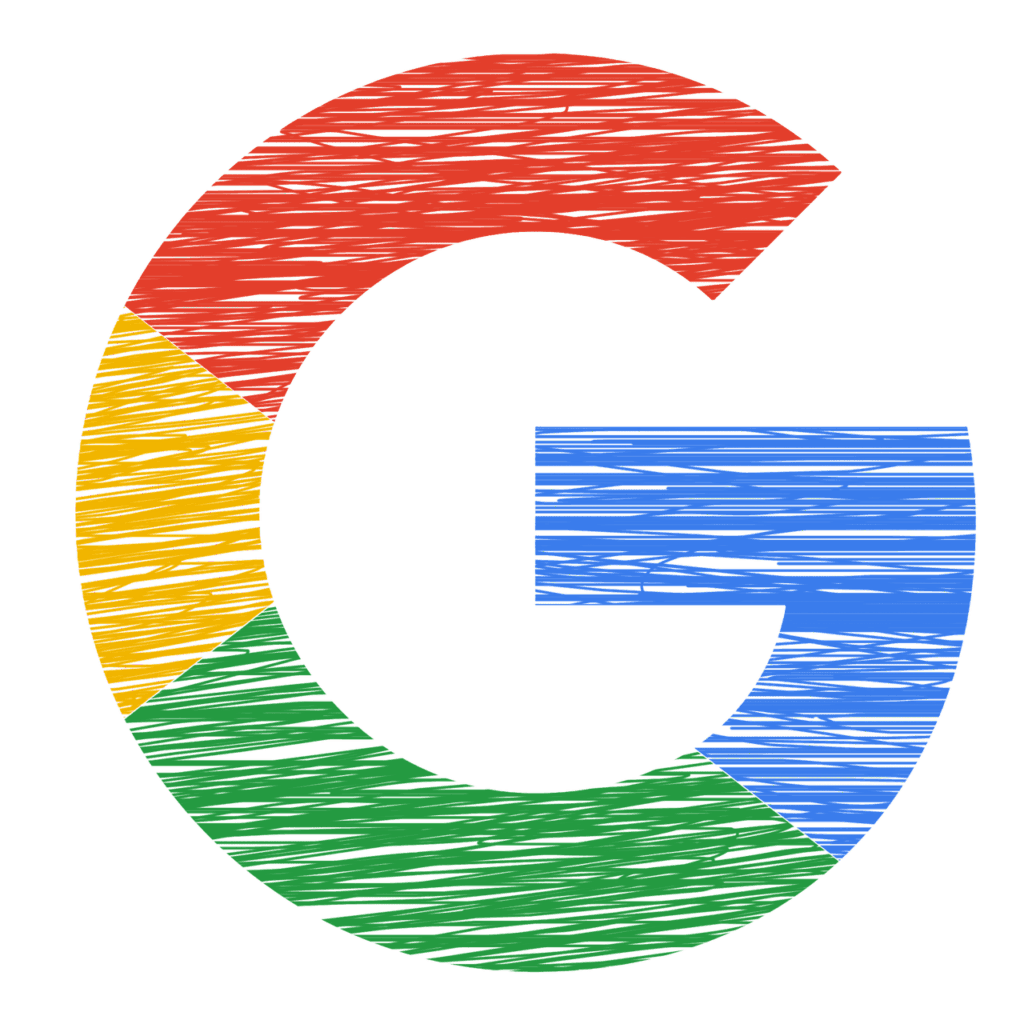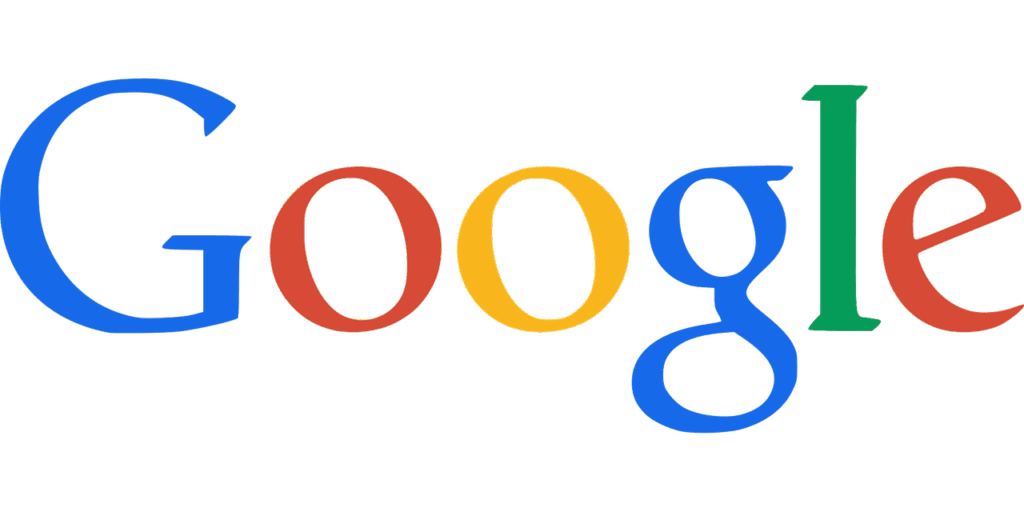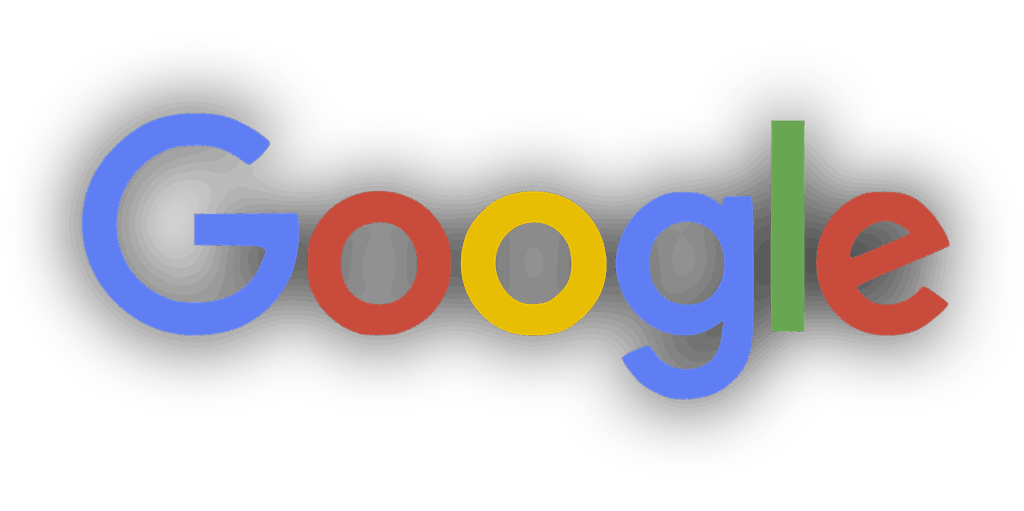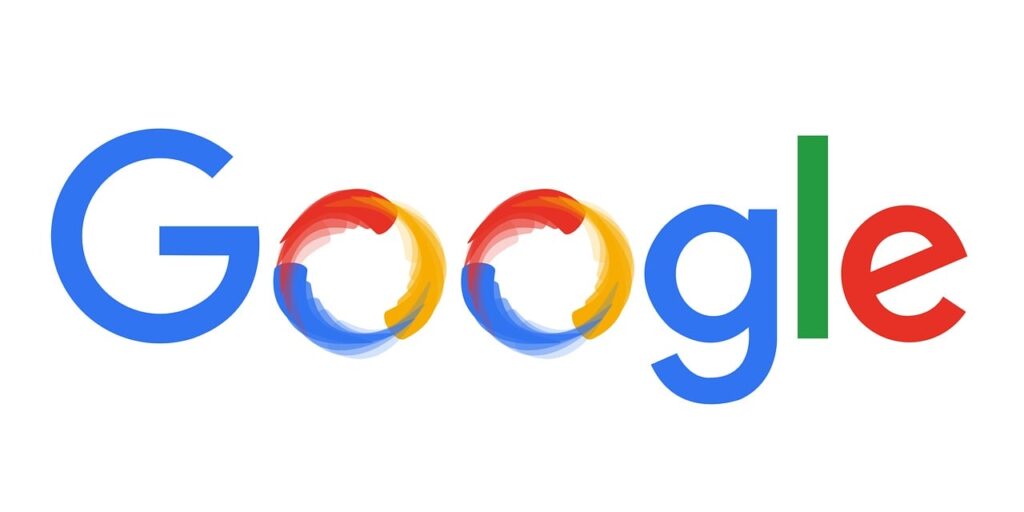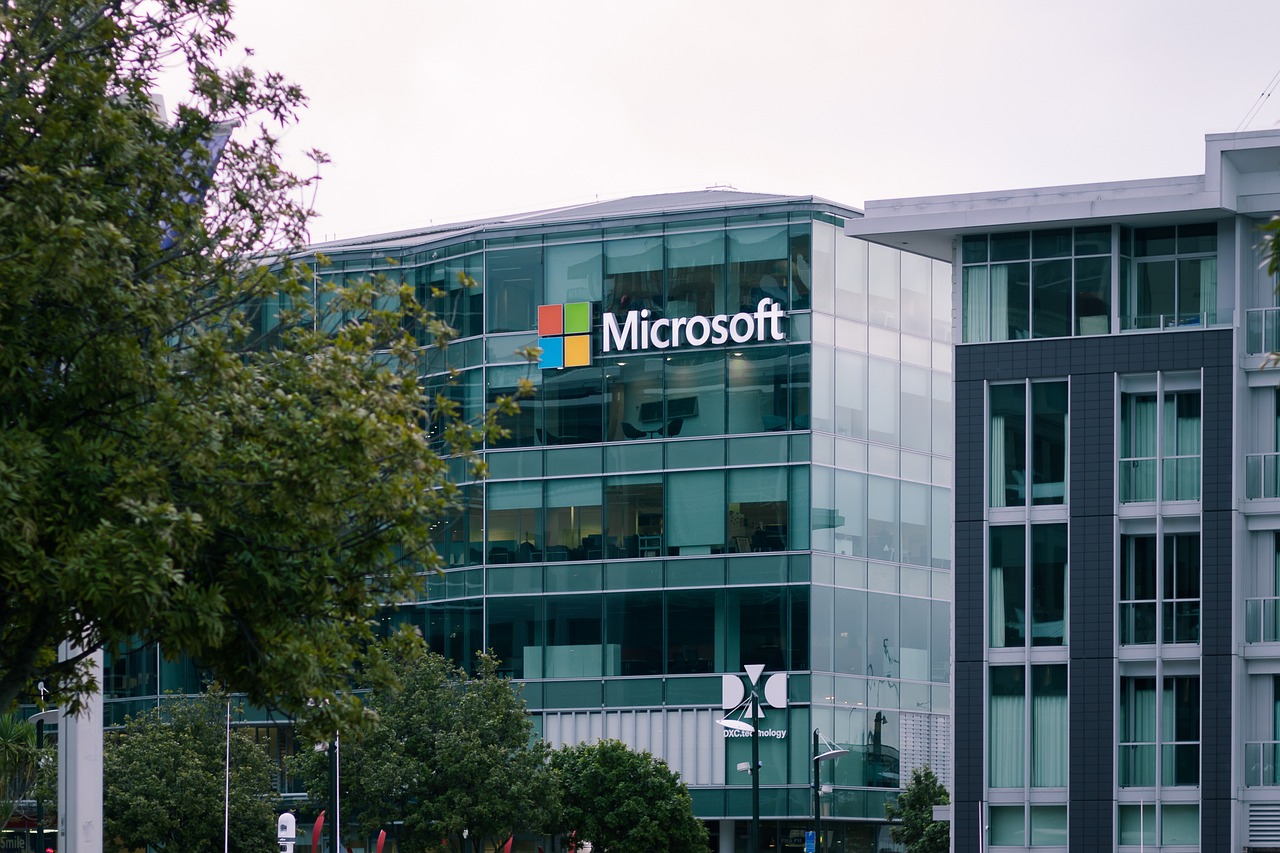Google, an American multinational technology corporation, has transcended its origins as a mere search engine to become an unparalleled force in the global economy. Often cited by the BBC as “the most powerful company in the world,” its pervasive influence touches nearly every facet of modern digital life, from information retrieval and communication to cloud computing and artificial intelligence. This remarkable ascent is a testament to its relentless innovation, strategic market penetration, and a business model that has consistently adapted to the rapidly evolving technological landscape.
Indeed, Google’s sprawling empire, under its parent company Alphabet Inc., encompasses a dizzying array of products and services that are dominant in their respective industries. Whether it’s email, navigation, video sharing, mobile operating systems, or productivity tools, the company has skillfully engineered a vast ecosystem that supports billions of users worldwide. This comprehensive reach has not only solidified its market leadership but also established it as one of the world’s most valuable brands.
This article aims to provide an in-depth examination of Google’s journey, offering an authoritative and fact-based look at its genesis, pivotal growth phases, financial architecture, and significant corporate transformations. We will delve into the strategic decisions and innovations that have propelled Google from a modest university research project into a technological colossus, shaping the digital economy and defining the future of technology.
1. **Genesis and Vision: The Stanford Roots of a Global Giant**The story of Google began not in a corporate boardroom, but in the academic corridors of Stanford University in January 1996. It was here that American computer scientists Larry Page and Sergey Brin, both PhD students, embarked on a research project that would fundamentally alter the way we access information. Their initial endeavor, unofficially involving Scott Hassan as the lead programmer, centered on developing a search engine far more sophisticated than the conventional ones of the era.
Traditional search engines of the time ranked results primarily by counting the frequency of search terms on a page. Page and Brin, however, theorized about a superior system that would analyze the intricate relationships among websites. This innovative approach led to the development of what they named PageRank, an algorithm designed to determine a website’s relevance by assessing both the number and the importance of pages that linked back to the original site. Scott Hassan was instrumental in writing much of the original code to implement Page’s groundbreaking ideas.
The project quickly gained momentum, with Page and Brin even utilizing their friend Susan Wojcicki’s garage as their makeshift office when the search engine was formally established in 1998. The intellectual underpinnings of their work were further cemented in 1998 when Rajeev Motwani and Terry Winograd co-authored the first paper describing PageRank and the initial prototype of their search engine with Page and Brin, acknowledging significant contributions from Héctor García-Molina and Jeffrey Ullman. This early academic collaboration laid the theoretical groundwork for Google’s future dominance.
Initially, the new search engine was playfully nicknamed “BackRub,” a descriptive moniker reflecting its core mechanism of checking backlinks to estimate a site’s importance. This early period of intensive research and development, spearheaded by Page and Brin with crucial support from individuals like Hassan and Alan Steremberg, established the innovative framework that would soon transform into the ubiquitous tool we know today. The shift from an academic project to a commercial entity marked the beginning of a truly global phenomenon.
2. **Funding the Future: Early Investments and Strategic Decisions**The transition from a university research project to a burgeoning company required substantial financial backing, and Google’s initial funding story is as remarkable as its inception. A pivotal moment occurred in August 1998 with an investment of $100,000 from Andy Bechtolsheim, a co-founder of Sun Microsystems. This crucial injection of capital served as a powerful impetus for Page and Brin to formally incorporate their company, enabling them to leverage these funds for growth.
Bechtolsheim’s involvement was facilitated by David Cheriton, who, having recently sold his company Granite Systems to Cisco, had startup experience and a nearby office at Stanford. A brief but impactful meeting at Cheriton’s Palo Alto home led Bechtolsheim to quickly grasp Google’s potential and write the initial check. Cheriton himself later contributed with a $250,000 investment, further bolstering the nascent company’s financial foundation.
Beyond these early benefactors, Google also attracted investment from other notable angel investors in 1998. Amazon founder Jeff Bezos and entrepreneur Ram Shriram were among them. Shriram, a venture capitalist, had invested $250,000 in Google in February 1998 after Page and Brin approached him for funding and counsel. It was Shriram who brought Google to Bezos’s attention, leading to Bezos’s investment during a vacation trip to the Bay Area. Despite Google’s initial funding round having formally closed, Bezos’s stature as Amazon’s CEO convinced Page and Brin to extend the round and accept his investment.
Collectively, through these initial investors, along with contributions from friends and family, Google successfully raised approximately $1,000,000. This capital was instrumental in enabling the founders to establish their first operational space in Menlo Park, California. Significantly, this period also saw the hiring of Craig Silverstein, a fellow PhD student from Stanford, who became Google’s very first employee, marking the expansion of the team beyond its co-founders.
Read more about: Navigating the Complexities of Finance: Essential Disciplines for Prudent Financial Management
3. **Monumental Growth and Market Debut: From Garage to IPO**Following its formative years, the search engine underwent a significant rebranding, shedding its original “BackRub” nickname for “Google.” This name, a misspelling of the word “googol” (1 followed by 100 zeros), was deliberately chosen to symbolize the immense quantities of information the search engine aimed to provide. This linguistic shift signaled an ambition commensurate with the company’s groundbreaking technology.
As Google rapidly outgrew its initial garage setup, it relocated its offices to Palo Alto, California, in March 1999, placing it within the heart of Silicon Valley’s vibrant tech ecosystem. A year later, in 2000, Google took a bold step into commercialization by beginning to sell advertisements associated with search keywords. This move, initially met with opposition from Page and Brin who envisioned an ad-free search experience, proved to be a critical revenue stream. To maintain an uncluttered page, these advertisements were strictly text-based, reflecting a commitment to user experience.
In a major validation of its technology, Google was announced in June 2000 as the default search engine provider for Yahoo!, then one of the internet’s most popular websites, replacing Inktomi. This partnership significantly broadened Google’s reach and cemented its position as a leading search technology. Recognizing the need for robust internal management amidst its rapid expansion, Google’s investors, led by John Doerr of Kleiner Perkins, persuaded Page and Brin to hire an experienced CEO. Eric Schmidt, proposed by Doerr, took the helm as chairman and CEO in 2001, demonstrating his commitment by purchasing $1 million in Google preferred stocks.
By 2003, Google had again outgrown its premises and leased a large office complex from Silicon Graphics in Mountain View, California, which famously became known as the “Googleplex.” Three years later, Google purchased this property for $319 million, solidifying its physical presence. Such was the company’s cultural impact that by 2006, the verb “google” was added to the Merriam-Webster Collegiate Dictionary and the Oxford English Dictionary, defined as “to use the Google search engine to obtain information on the Internet,” highlighting its profound integration into everyday language.
The culmination of this early growth and strategic development arrived on August 19, 2004, when Google became a public company through an initial public offering (IPO). The company offered 19,605,052 shares at a price of $85 per share on the NASDAQ National Market under the ticker symbol GOOGL. This online auction-based sale generated $1.67 billion, giving Google a market capitalization exceeding $23 billion. At this momentous occasion, Page, Brin, and Schmidt famously agreed to work together at Google for another two decades, until the year 2024, signaling a long-term commitment to their burgeoning enterprise. The stock performed exceptionally well post-IPO, hitting $350 for the first time on October 31, 2007, largely propelled by strong sales and earnings in the burgeoning online advertising market.

4. **Expanding Horizons: Key Acquisitions Shaping the Google Ecosystem**Google’s remarkable growth has been fueled not only by internal innovation but also by a series of strategic acquisitions that have profoundly shaped its product ecosystem and market dominance. These key purchases allowed the company to integrate new technologies, eliminate competitors, and expand into entirely new sectors, solidifying its position across the digital landscape. Each acquisition represented a calculated move to enhance its offerings and fortify its technological lead.
One of Google’s most iconic acquisitions occurred on October 9, 2006, when it bought YouTube for $1.65 billion in Google stock. This move instantly made Google a dominant player in online video sharing, a market that was rapidly expanding. YouTube’s integration proved immensely successful, transforming it into one of the most visited websites globally and a cornerstone of Google’s content strategy.
Further strengthening its advertising stronghold, Google acquired DoubleClick for $3.1 billion on March 11, 2008. This acquisition was crucial as it transferred to Google valuable relationships DoubleClick had cultivated with web publishers and advertising agencies. This significantly bolstered Google’s ability to target advertising effectively and expand its reach across the internet, integrating DoubleClick’s technology into its own robust advertising platforms.
In a major move to protect and advance its mobile operating system, Android, Google acquired Motorola Mobility for $12.5 billion in May 2012. This was Google’s largest acquisition to date at the time, made specifically to gain Motorola’s considerable patent portfolio on mobile phones and wireless technologies. This strategic maneuver was vital in helping Google defend itself in ongoing patent disputes, particularly with rivals like Apple and Microsoft, and ensuring the continued free offering of Android, a critical component of its mobile strategy.
Google continued to bolster its mapping and navigation services with the acquisition of Waze for $966 million in June 2013. While Waze maintained a degree of independence, its crowdsourced location platform and social features were recognized as valuable integrations with Google Maps, enriching Google’s own mapping service. This acquisition demonstrated Google’s commitment to enhancing user experience through community-driven data.
A significant step into the future of computing came on January 26, 2014, with the announcement of Google’s agreement to acquire DeepMind Technologies, a privately held AI company from London, for a reported $400 million. This purchase was a clear signal of Google’s burgeoning ambitions in the fields of artificial intelligence and robotics, providing critical expertise and talent that would later yield groundbreaking advancements, such as DeepMind’s AlphaGo program.
Looking further ahead, in March 2025, Google agreed to its biggest acquisition ever: the purchase of Wiz, a New York-based cybersecurity startup specializing in cloud computing, for a staggering US$32 billion in a cash deal. This acquisition, which was also the most expensive deal of 2025 at the time, was strategically aimed at helping “artificial-intelligence companies get better security and use more than one cloud service.” This underscores Google’s ongoing commitment to strengthening its cloud offerings and securing the rapidly expanding AI landscape.
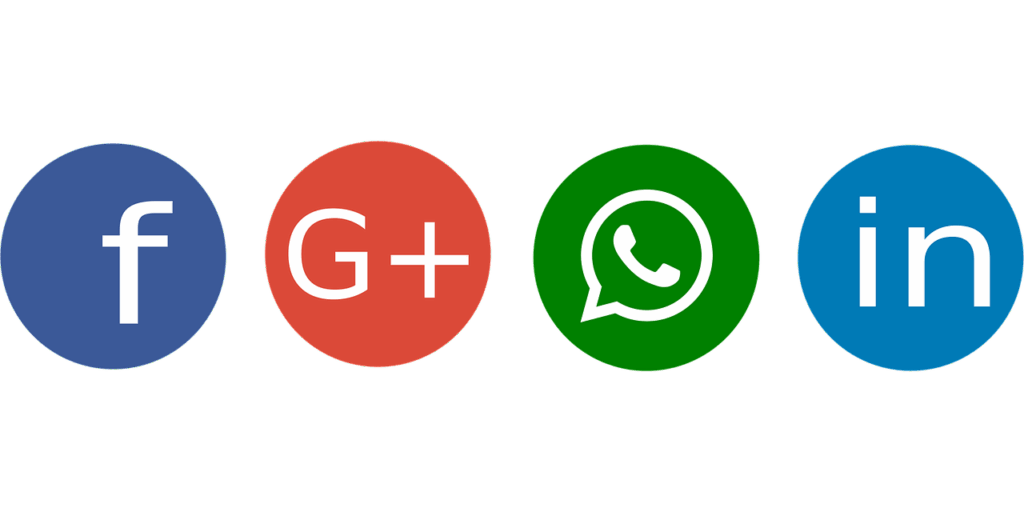
5. **The Advertising Machine: Powering Google’s Immense Revenue**The financial engine driving Google’s expansive operations and continuous innovation is unequivocally its advertising business. The vast majority of Google’s revenues are generated through its sophisticated advertising platforms, a model that has proven extraordinarily effective and profitable. This includes not only direct ad sales but also revenue from app sales, in-app purchases, digital content products on Google and YouTube, Android licensing, and fees from Google Cloud offerings, all of which often indirectly benefit from the advertising ecosystem.
To illustrate the scale of this operation, in 2017, a remarkable 46 percent of Google’s profit stemmed from clicks, or cost-per-click advertising, amounting to an impressive US$109,652 million. This significant figure highlights how central advertising is to the company’s financial health. Google employs three principal methods to monetize its advertising services: AdMob for mobile app monetization, AdSense for website publishers, and DoubleClick AdExchange for programmatic advertising.
Google Ads serves as the primary platform for advertisers to display their advertisements across Google’s extensive content network, primarily through a cost-per-click scheme where advertisers pay when a user clicks on their ad. Complementing this, Google AdSense allows website owners to integrate these advertisements onto their own sites, earning revenue each time an ad is clicked. This symbiotic relationship creates a wide-reaching network for ad distribution.
Central to Google’s advertising prowess is its sophisticated targeting capability. Beyond its own algorithms for understanding search requests, Google leverages technology from its acquisition of DoubleClick to project user interests and precisely target advertisements based on the search context and individual user history. This enables advertisers to reach highly relevant audiences, increasing the effectiveness of their campaigns. Expanding its reach, Google also launched “AdSense for Mobile” in 2007, capitalizing on the emerging mobile advertising market.
Despite its immense success, Google’s advertising model has not been without its criticisms. Concerns regarding “click fraud” have been persistent, where individuals or automated scripts click on advertisements without genuine interest in the product, causing advertisers to incur undue costs. Industry reports from as early as 2006 suggested that approximately 14 to 20 percent of clicks could be fraudulent or invalid, underscoring a continuous challenge in maintaining the integrity of its advertising platforms. Nevertheless, the sheer scale and effectiveness of Google’s advertising machine remain the bedrock of its financial might.
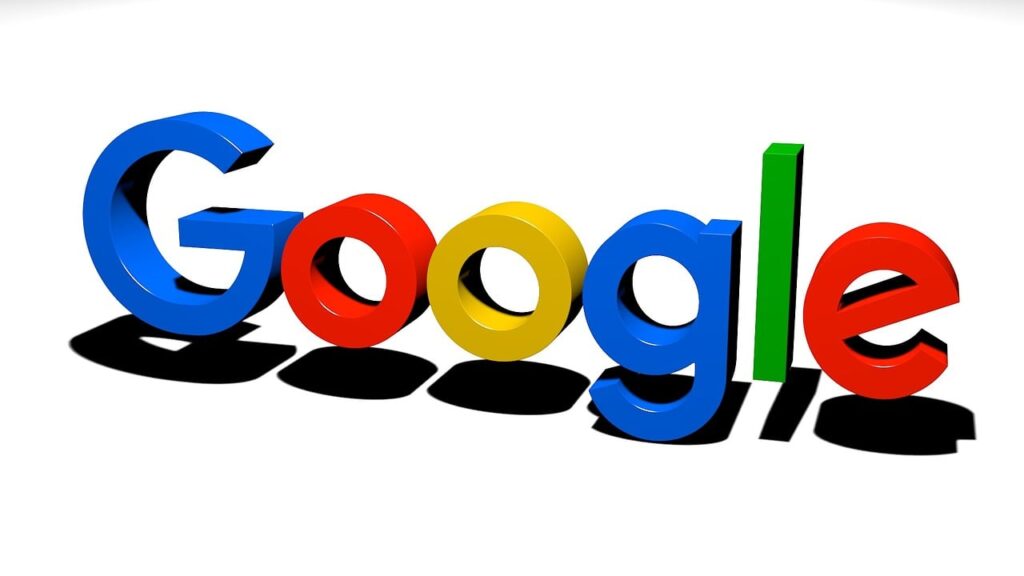
6. **The Alphabet Reorganization: A New Era of Corporate Structure**On August 10, 2015, Google announced a transformative reorganization plan that created a new corporate structure under a conglomerate named Alphabet Inc. This strategic move was not merely cosmetic; it fundamentally redefined Google’s corporate identity and its operational framework. Larry Page, then CEO of Google, articulated that this restructuring would allow for better management and transparency across Google’s increasingly diverse portfolio of ventures, separating its core internet services from its more ambitious “other bets.”
Under this new structure, Google became Alphabet’s largest and most prominent subsidiary, functioning as the umbrella company for all of Alphabet’s Internet properties and interests. This included its dominant search engine, advertising platforms, YouTube, Android, Chrome, and its vast array of consumer and enterprise software. The creation of Alphabet Inc. essentially housed these well-established, profitable entities under a clearly defined corporate segment.
Concurrent with this significant reorganization, a leadership transition took place. Sundar Pichai, who had been instrumental in the development of Chrome and Android, was appointed as the new CEO of Google, stepping into the role previously held by Larry Page. Page, in turn, ascended to the position of CEO of the newly formed parent company, Alphabet Inc., signaling a focus on overseeing the broader conglomerate’s strategic direction and diverse ventures, rather than the day-to-day operations of Google itself.
The leadership evolution continued when, on December 3, 2019, Sundar Pichai also assumed the role of CEO of Alphabet, in addition to his ongoing duties as Google’s CEO. This further consolidated leadership at the very top of the organization, reflecting a streamlined approach to managing the entire corporate entity. Financially, the reorganization also meant that from the financial year 2015 onwards, Google’s key financial trends and figures were published under Alphabet Inc., providing a more segmented and transparent view of the performance of its various business units and investments.
This structural change allowed Google to continue focusing intensely on its core internet businesses, while Alphabet could foster innovation in more speculative, long-term projects such as Waymo (self-driving cars), Calico (life sciences), and DeepMind (AI research). This segregation of responsibilities and focus areas was intended to enhance efficiency, encourage entrepreneurial endeavors, and provide greater clarity for investors regarding the performance of both the profitable core business and the riskier, high-potential ventures.
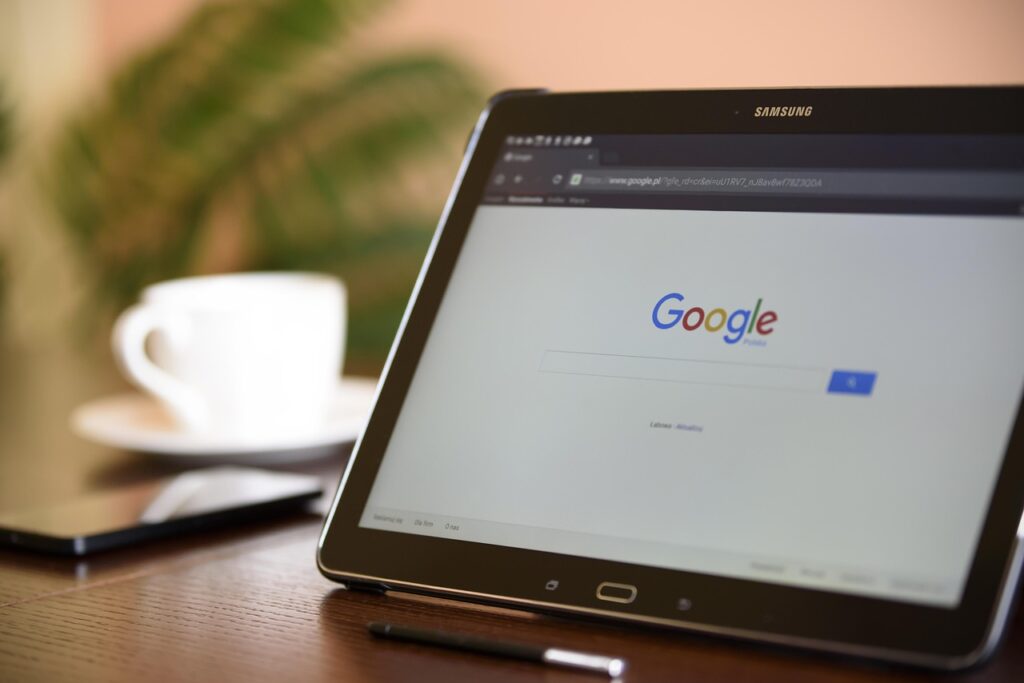
7. **The Digital Universe: Google’s Expansive Consumer Services Ecosystem**Google’s strategic ambition extends far beyond its foundational search engine, encompassing an unparalleled suite of consumer-facing products and services that define modern digital interaction. This vast ecosystem, under Alphabet Inc.’s umbrella, provides billions of users worldwide with essential tools for communication, information, and daily life. This pervasive influence solidifies its status as a technological colossus and market leader.
From email to entertainment, Google’s dominant position is evident across numerous categories. Gmail provides a widely adopted email service, while Google Maps and Google Earth are indispensable for navigation and mapping. YouTube remains the preeminent platform for video viewing and sharing, transforming content consumption globally. Additionally, Google Drive offers cloud storage, seamlessly integrating with Google Docs, Sheets, and Slides for comprehensive office productivity, further embedding Google into personal and professional workflows.
The company’s influence also extends into the foundational layers of mobile and web experiences. Android, its mobile operating system, powers the vast majority of smartphones globally, while Google Chrome is the leading web browser. Complementing these are ChromeOS, an operating system based on Chrome, and the Google Assistant, an AI virtual assistant. This comprehensive reach solidifies Google’s market leadership and establishes it as one of the world’s most valuable brands across numerous digital fronts.

8. **Innovation in Hand: Google’s Hardware Ventures**Google’s strategic pivot into hardware represents a deliberate expansion from purely software-based services to tangible devices that extend its ecosystem directly into users’ homes and hands. This journey began with ambitious ventures aimed at shaping the future of personal technology, often integrating closely with its powerful software platforms and artificial intelligence. The company’s hardware division focuses on developing seamless, interconnected experiences leveraging Google’s broader capabilities.
The company’s initial significant step into hardware began in January 2010 with the Nexus One, the first Android phone under its own brand. This line, including various phones and tablets, established Google’s presence in the competitive smartphone market until its discontinuation in 2016, making way for the Pixel brand. The Pixel series, including smartphones and the Pixel Watch, showcases the full capabilities of the Android operating system and its integrated AI, offering flagship devices that reinforce Google’s brand.
Beyond smartphones, Google has innovated in other key hardware categories. The Chromebook, introduced in 2011, offers a lightweight, cloud-centric computing experience running on ChromeOS. The Chromecast dongle, launched in July 2013, revolutionized content streaming from smartphones to televisions. Furthermore, Google has made substantial inroads into the smart home domain with its Nest product line, including voice assistant smart speakers and Nest Wifi routers, creating integrated and intelligent living environments.
9. **Empowering Enterprises: Google’s Business and Cloud Solutions**Beyond its ubiquitous consumer offerings, Google has meticulously cultivated a robust portfolio of enterprise-grade services, strategically designed to empower businesses and organizations worldwide. These solutions extend Google’s technological prowess into corporate environments, offering tools for collaboration, data management, and operational efficiency, mirroring its consumer innovation with enhanced security and administrative features.
Central to Google’s enterprise strategy is Google Workspace, a monthly subscription service providing organizations with a comprehensive suite of tools. This includes familiar applications like Gmail, Google Drive, Docs, Sheets, and Slides, all with enhanced administrative controls, unique domain names, and dedicated 24/7 support. This integrated platform enables businesses to streamline operations and foster seamless collaboration. Underlying this, Google Cloud Platform (GCP) offers scalable cloud services crucial for businesses seeking robust and flexible solutions in computing, storage, and machine learning.
Google further supports the entrepreneurial ecosystem through initiatives like Google for Entrepreneurs, launched in September 2012, providing startups with co-working spaces, workshops, and mentorships across global Campuses. In marketing and data analytics, the Google Analytics 360 Suite, introduced in March 2016, offers integrated products for enterprise-class marketers. This suite, competing with Adobe, Oracle, Salesforce, and IBM, helps businesses “see the complete customer journey” and generate “useful insights.”

10. **The AI Frontier: Pioneering Artificial Intelligence Developments**Google has positioned itself at the vanguard of artificial intelligence (AI) research and development, viewing it as a foundational technology underpinning its entire ecosystem and future growth. The acquisition of DeepMind Technologies in 2014 for an estimated $400 million signaled Google’s serious commitment to AI, which later yielded groundbreaking advancements like AlphaGo, the first computer program to defeat a top human professional at Go. This sustained investment cemented Google’s role as a leader in machine intelligence.
In recent years, Google has dramatically accelerated its generative AI initiatives. Following a “code red” directive in late 2022, the company integrated generative AI into many of its most important products. This strategy culminated in the release of Gemini in March 2023, a generative AI chatbot designed to be a legitimate competitor to other leading models. Further innovations include Imagen for text-to-image generation and Veo for text-to-video, showcasing Google’s capabilities in multimodal AI content creation and development of AI chips like TPUs.
Google’s commitment extends to practical tools and strategic investments. NotebookLM, an online tool, synthesizes documents using Gemini, with its “Audio Overview” feature gaining attention in September 2024. LearnLM, a family of language models, serves as personal AI tutors, and SynthID Detector aims to identify AI-generated content. Globally, a new AI hub was announced in Saudi Arabia in November 2024, projected to contribute up to $71 billion to the Kingdom’s economy by advancing AI-driven solutions. Additionally, in July 2025, Google secured a $200 million contract for AI in the military from the U.S. Department of Defense.
Read more about: Beyond the Human Touch: 15 Groundbreaking Elements Shaping AI-Powered Movie Soundtracks

11. **Navigating Scrutiny: Antitrust Challenges and Corporate Controversies**Google has faced significant and persistent scrutiny regarding its business practices, market power, and corporate conduct, despite its technological triumphs. These challenges span from governmental antitrust investigations and hefty fines to internal employee activism and ethical debates, underscoring the complexities of operating a global technology giant. Maintaining pervasive influence while adhering to regulatory and societal expectations remains a continuous test.
Antitrust concerns have been a recurring theme, with national and international bodies challenging Google’s market position. The U.S. Department of Justice initiated an investigation in June 2019, leading to a lawsuit in October 2020. This culminated in August 2024, with a lower court finding an illegal monopoly over internet search, violating Section 2 of the Sherman Act. Similarly, in September 2024, the EU Court of Justice found Google held an illegal monopoly in shopping search, reaffirming a €2.4 billion fine for “discriminatory” treatment. Revelations in April 2021 about “Project Bernanke,” allegedly using past advertising bids, further fueled these accusations.
Beyond external regulatory pressures, Google has navigated substantial internal controversies. Between 2018 and 2019, tensions between leadership and employees escalated, leading to protests over issues like the handling of ual harassment complaints, “Dragonfly” (a censored Chinese search engine), and “Project Maven” (a military drone AI program). A New York Times exposé in October 2018 prompted Google to disclose “48 employees have been fired over the last two years” for sexual misconduct. This resulted in over 20,000 Google employees staging a global walk-out on November 1, 2018, with CEO Sundar Pichai reportedly supporting the protests.
Additional criticisms against Google have included privacy concerns, tax avoidance, censorship, and search neutrality. The company’s vast collection of user data has often raised alarms among privacy advocates. In 2022, Google expanded its policy to accept requests for the removal of certain personal identifying information from search results, though it retains the right to refuse broadly useful public content. In January 2021, Google even threatened to close access to its search engine in Australia over proposed legislation, highlighting its aggressive stance in protecting its business model.

12. **Strategic Futures: Global Investments and Emerging Technologies**Google’s long-term vision extends beyond current product lines, encompassing ambitious global investments and strategic ventures into emerging technologies. These initiatives, often under Alphabet’s “other bets” or integrated into Google’s core strategy, demonstrate a willingness to invest significant capital and intellectual resources. This forward-looking approach ensures Google remains at the forefront of technological advancement, even if immediate profitability is uncertain.
A notable example of Google’s infrastructure investment is the Google Fiber project, announced in February 2010, which sought to build ultra-high-speed broadband networks for American cities, aiming to service hundreds of thousands of customers. Following the Alphabet reorganization, Google Fiber was moved to Alphabet’s Access division. Similarly, Project Fi, launched in April 2015, revolutionized mobile connectivity by combining Wi-Fi and cellular networks from different providers for seamless and fast internet signals. Additionally, Google explored groundbreaking initiatives in life sciences (Calico) and smart city technologies (Sidewalk Labs).
Recent strategic acquisitions and partnerships underscore Google’s focus on bolstering its capabilities in critical future-facing domains. In May 2022, Google acquired Raxium, a MicroLED display technology company, to enhance its Devices and Services team. Furthermore, in March 2025, Google agreed to its biggest acquisition ever, purchasing Wiz, a cybersecurity startup, for US$32 billion. This deal, the most expensive of 2025, aims to help “artificial-intelligence companies get better security and use more than one cloud service,” securing the AI landscape. In August 2023, Google also joined the OpenWallet Foundation, signaling its embrace of collaborative industry standards for digital finance.
As we’ve journeyed through the intricate tapestry of Google’s evolution, from a Stanford research project to a sprawling global conglomerate, it becomes profoundly clear that its impact on the digital age is both expansive and indelible. Google’s relentless pursuit of innovation, its strategic diversification into hardware and enterprise solutions, and its pioneering advancements in artificial intelligence continue to reshape how we interact with technology and the world. While navigating significant challenges ranging from regulatory scrutiny to internal dissent, Google remains a dominant force, constantly redefining the boundaries of what’s possible, and solidifying its position not just as a technology provider, but as an architect of our connected future.

